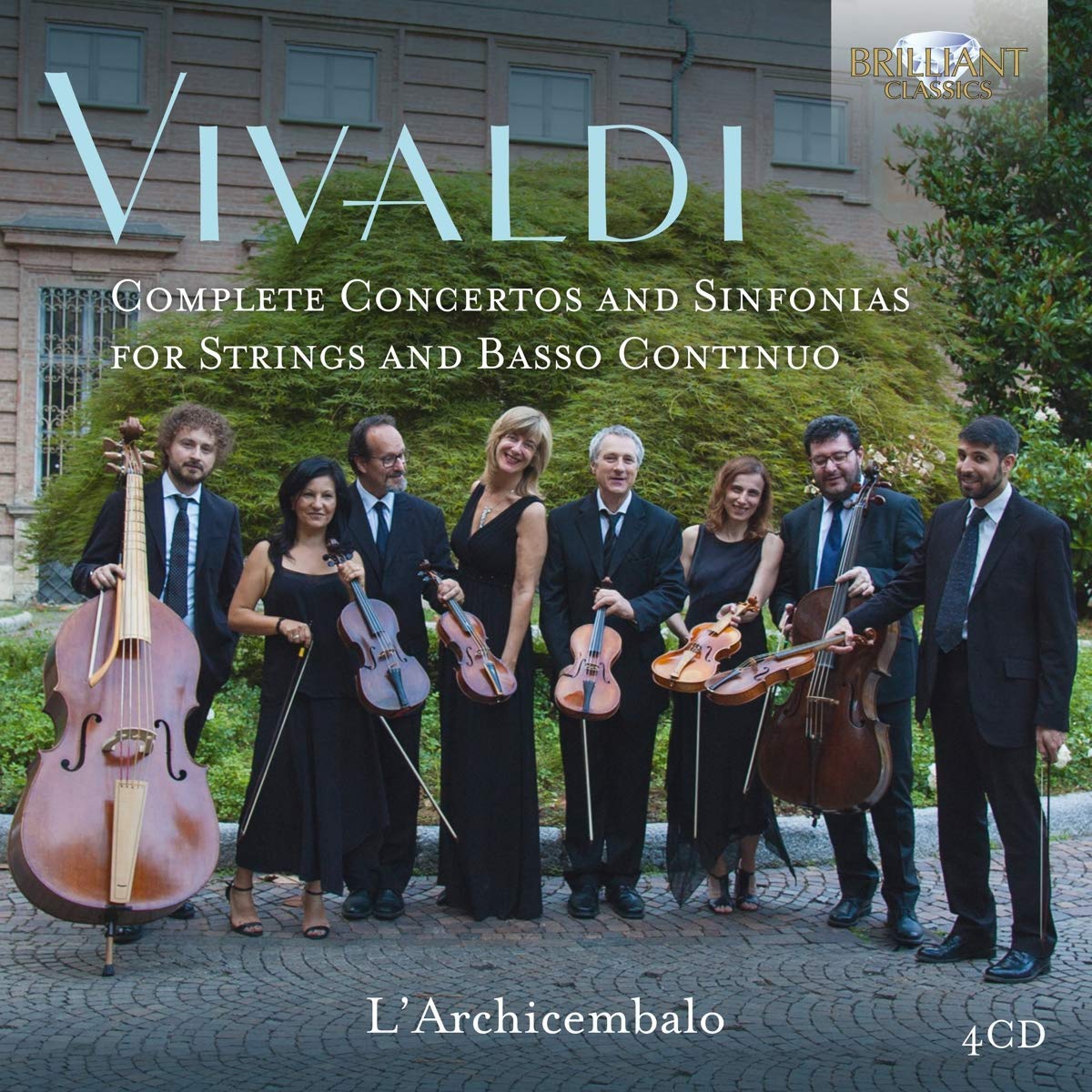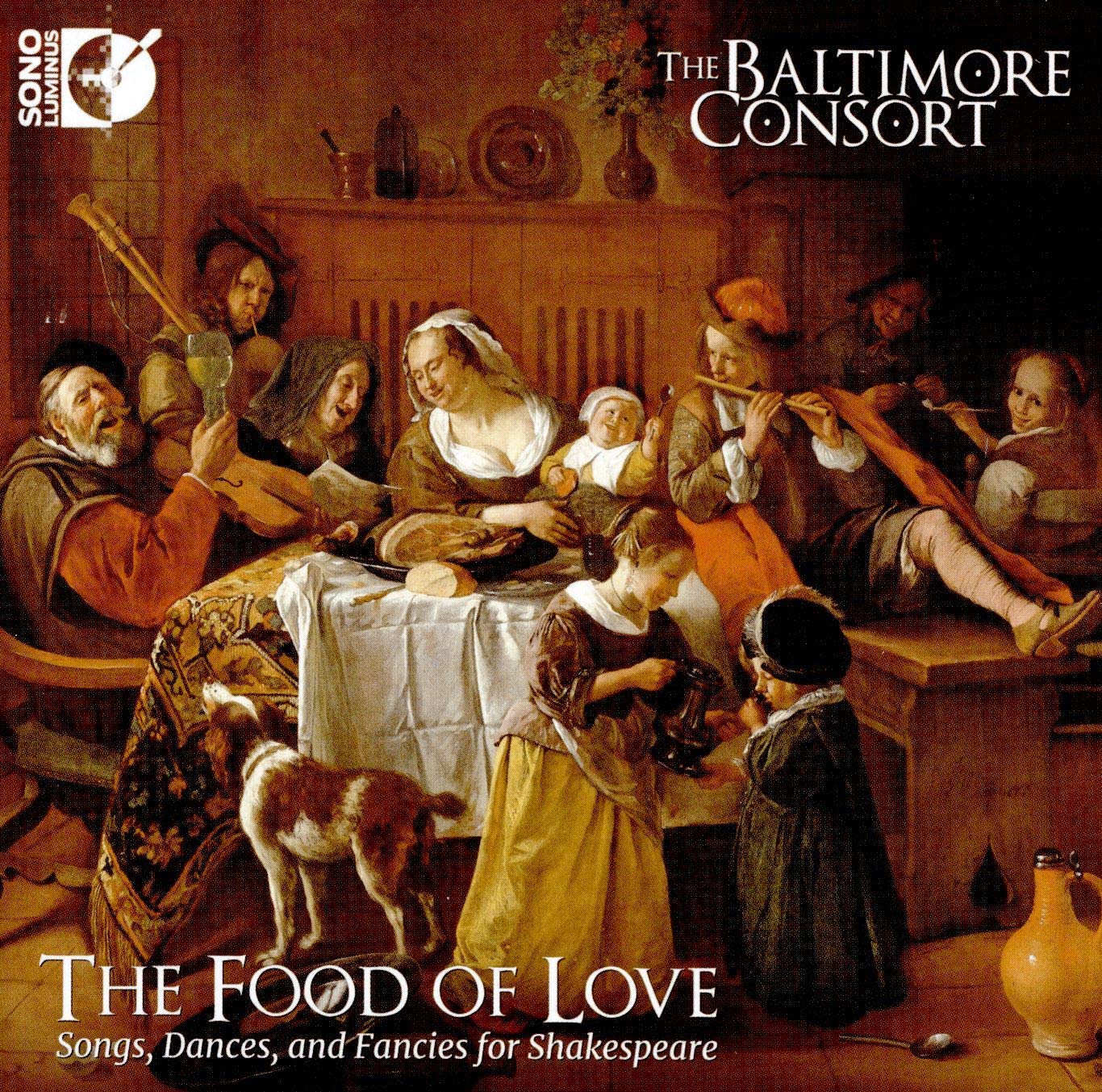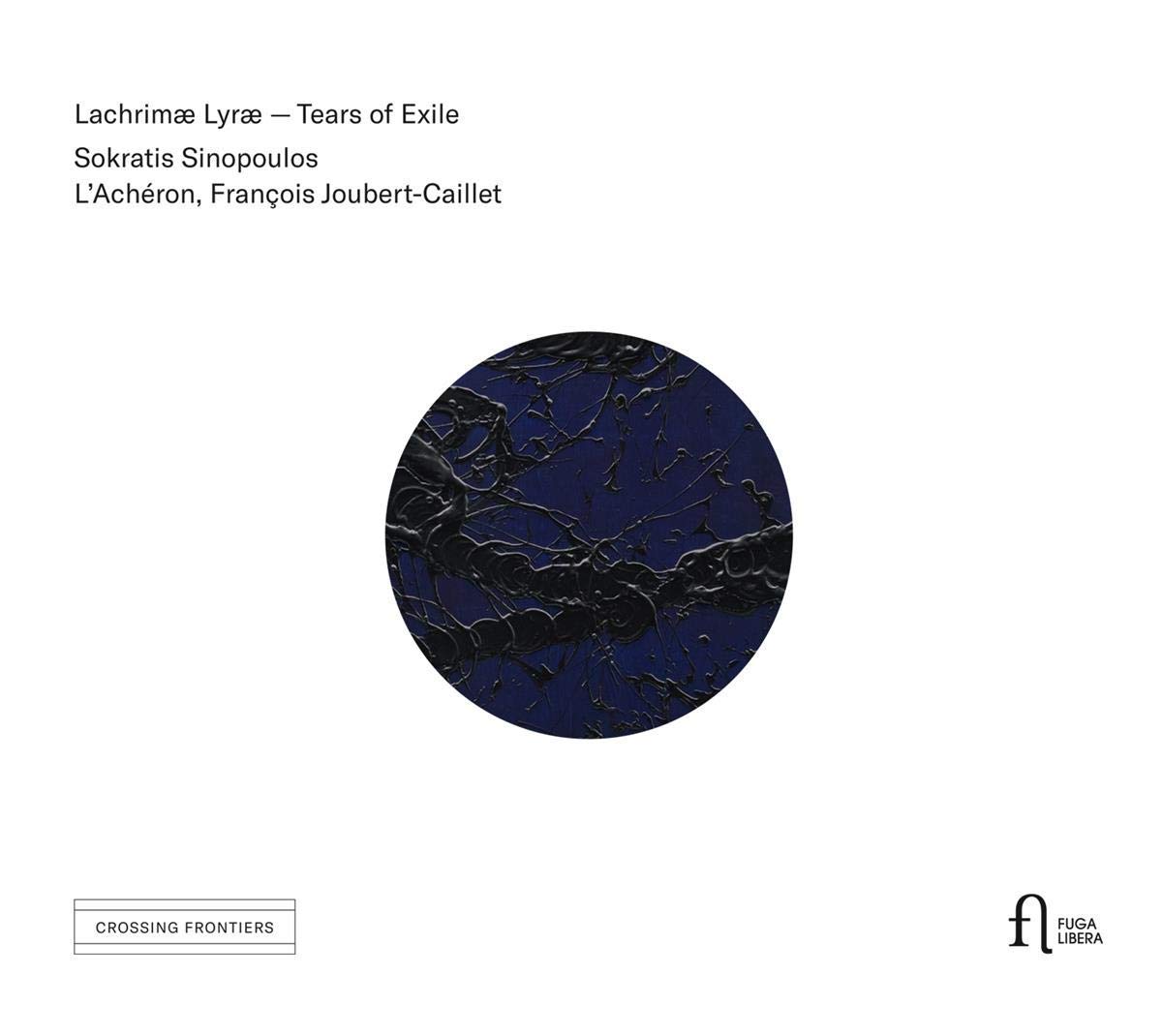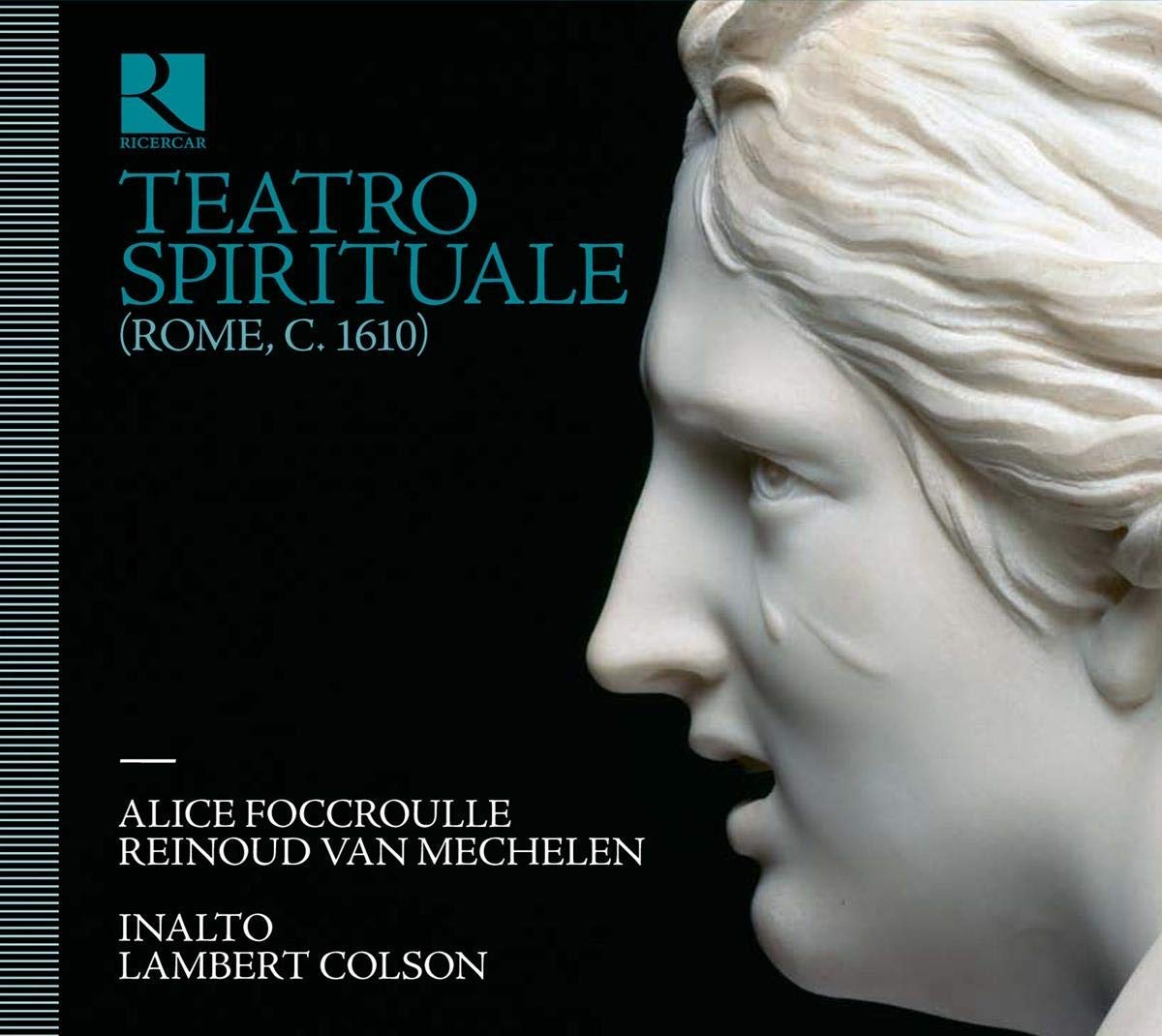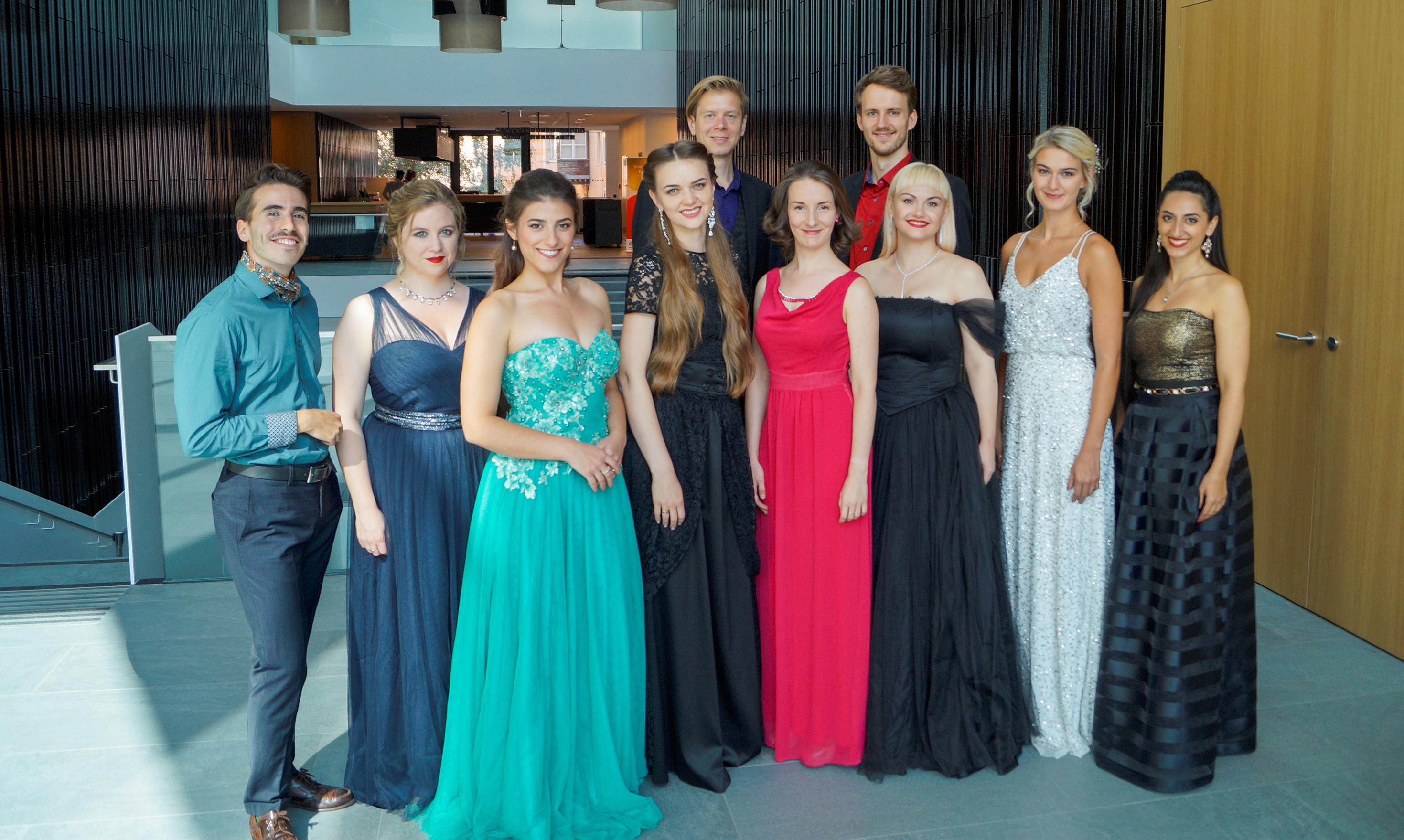D James Ross at the 10th Lammermuir Festival 2019
{ Click here to download an eight-page PDF of this review }
One glance at the brochure for the 2019 Lammermuir Festival revealed that the organisers had really pushed the boat out for their tenth anniversary. At the heart of this ambitious programme were concert sequences by three internationally renowned ensembles, the Quatuor Mosaïques, Vox Luminis and the Dunedin Consort. It is two years since the Quatuor Mosaïques delighted the Lammermuir audience with revelatory accounts on period instruments of the music of classical Vienna, and their very welcome return opened the current Festival with performances of Haydn and Beethoven in the exquisite St Mary’s Parish Church, Whitekirk. The Festival prides itself in the innovative matching of venues and performers, and this 15th-century jewel of a building proved the perfect home for the Quatuor. Appropriately for a beautifully sunny day, the programme opened with a sparkling account of Haydn’s op 64/6. Composed towards the end of the composer’s period of employment with the Esterházy family, this is a work of classical perfection with an overlay of virtuosic writing for the first violin and some witty episodes of rusticity, recalling the eastern European folk playing Haydn must have heard all around him. With Viennese blood coursing through their veins, the Quatuor inhabit Haydn’s music with a definitive authenticity, revelling in the master’s quirky writing and eloquent idiom. The decision to employ gut strings seems to alter the dynamics within the ensemble, leading to a much more democratic sound, from which the first violin is allowed to emerge by dint of Haydn’s cunning use of the upper range – how his colleague, the Hungarian virtuoso violinist Johann Tost, would have relished these moments in the sun! Erich Höbarth’s easy virtuosity gave us an inkling of why these op 64 quartets caused such a stir in London during Haydn’s first visit there in 1791.
Six years later, Haydn composed his op 76 Quartets, and the Quatuor gave us the fourth of these, called the Sunrise. The sheer elegance of this work by perhaps the greatest ever composer of string quartets was captured beautifully by the Mosaïques, whose rich sustained playing contrasted perfectly with episodes of sparkling wit and inspiration. Just as the op 76 Quartets are perhaps the most complete contribution made to the genre, this group seems to offer the complete package in performing them: utter integrity, technical assurance, considered authenticity, towering musicality and that x-factor of Viennese spirit!
The concert concluded with the first of Beethoven’s Razumovsky Quartets, composed in 1806 and marking a radical departure in the genre from the 36-year-old composer. The first of the set is a wonderfully lyrical and eloquent piece, and the Quatuor seemed to find a new intensity in their playing to express this new sound-world. Particularly impressive in this account were the two inner movements, the ironic Allegretto, where Haydnesque wit tipped occasionally into Beethovenian rage, and the sublimely sad Adagio, which the Quatuor imbued with an almost unbearable intensity. This opening recital in the Quatuor’s series of three seemed to set a standard it would be very hard to match.
The opening day of the Festival ended in spectacular style in St Mary’s Parish Church Haddington and the Dunedin Consort, fresh from a triumphant visit to the Proms. ‘Parish Church’ hardly seems an adequate epithet for Haddington’s magnificent 14th-century Collegiate Church, an establishment built for music and where the acoustic seems to be an active participant in every performance. Under the direction of John Butt, the Dunedins opened their four-concert series with a programme comprising two of Bach’s Brandenburg Concertos, two of his Orchestral Suites and two violin concertos by Vivaldi. The stunning soloist in the Vivaldi and the First Brandenburg, as well as being in many ways the soul of this remarkable ensemble, was its leader, Cecilia Bernardini. It seems that every note she plays is from the heart, and her stunning virtuosity seems just another way of her exploring the truth behind the music she plays. It is this intense musicality and desire to explore every aspect of the music they are playing which seems to possess this ensemble whenever they perform. An exquisitely phrased account of the first Orchestral Suite proved a stunning curtain-raiser, with some spectacular contributions from the group’s wind section of oboes and bassoon. Vivaldi’s less familiar op 8/6 Il Piacere proved an absolute delight.
The first half ended in spectacular style with Bach’s first Brandenburg. It would be nice if this work were the first orchestral use of the horn, although of course it isn’t. They sound as if they have been kidnapped from the darkest German woods, still braying their hunting calls and never quite integrated into the orchestral texture! The playing of Anneke Scott and Joe Walters, horns held spectacularly aloft, underlined the untamed nature of the Baroque horn, although they made the hair-raising practicalities of playing the valveless instrument without hand-stopping look effortless. This was a wonderfully vivid account of Bach’s first Brandenburg, and boded well for the complete set, which we would be hearing over the rest of the Festival.
The strings were allowed to shine in the second half, which opened with Bach’s beautifully compact third Brandenburg, whose imaginative opening movement and scampering concluding Allegro were linked by a heartfelt cadenza from Bernardini. The ‘Summer’ concerto from Vivaldi’s Four Seasons seemed to be extra Italianate in a sunny performance by the Dunedins, in which the fiery Presto episodes sizzled with energy. For the concluding account of Bach’s second Orchestral Suite, the Dunedins were joined by flautist Katy Bircher, whose warm tone and flawless virtuosity added a gleaming festive quality to some of Bach’s most joyous music.
The Lammermuir Festival are privileged to be allowed access to Lennoxlove Castle the home of the Duke of Hamilton, and in this special anniversary year they found to my mind the perfect synthesis of venue and performers for a charming morning recital. Surrounded by the finest of Scottish art, recorder player Tabea Debus and her ensemble seemed to thrive in the baronial magnificence of Lennoxlove’s 14th-century barrel-vaulted Great Hall. The sounds of recorder, viol, guitar and theorbo seemed utterly at home here, and the group’s Ode to an Earworm programme took us from the Middle Ages to the Baroque touching on a series of cult melodies. Processing in to the haunting tones of 14th-century Lament of Tristan, Debus magically conjured up her consort for a version of the Monteverdi’s Ciaconna. Playing mainly two lovely Renaissance instruments in the first half, Debus’s beautifully even tone and eye-watering dexterity breathed life into a sequence of material, familiar and unfamiliar.
The second half opened again with Debus on her own, this time playing a modern work by Freya Waley-Cohen called Caffeine in which both composer and performer would seem to have over-indulged in this powerful stimulant – a witty and stunning performance of a very effective show-piece. Concluding with an end-stopped high C-sharp, Debus ended up standing with one leg raised like the god Pan himself! A set of flighty variations on another earworm, Daphne, by the 17th-century recorder virtuoso Jacob van Eyck were given a performance which combined technical prowess with expressive musicality, while the highlights for me of a selection of Baroque pieces played by Debus on a variety of Baroque recorders were a beautifully passionate account of Purcell’s Fairest Isle and a heart-stopping performance of Handel’s Lascia ch’io pianga, which would have made Farinelli weep. In response to a well-deserved ovation, the group gave us one last earworm, which appropriately enough various members of the audience were heard to be singing and whistling as we wandered away through the lovely Lennoxlove grounds. It is a tune known in some sources as Old Bob Morris, but it exists in a number of guises which over the years I have played and even recorded – but can I put a name to it…?
To the lovely arts and crafts style Chalmers Memorial Church in Port Seton for the second of the Quatuor Mosaïques’ concerts. Mozart had just been studying Bach’s fugues when he was inspired in 1788 to write an Adagio and Fugue. While technically saturated in the world of the Baroque master, Mozart manages to make both these movements distinctly classical in style, and being Mozart he sets himself quite a challenge with his fugue subject which he proceeds to surmount triumphantly. The Quatuor seemed particularly intent on bringing out the fugal infrastructure of the music, which they achieved emphatically without sacrificing the overall musicality of the piece. Mozart famously was less comfortable composing string quartets than many other chamber genres, but you would never guess this from the consummate mastery displayed in his Prussian Quartet K575, composed the following year. Mozart was at the height of his powers, and his renewed interest in counterpoint helped conceive a work which belies any struggle he experienced in composing it. Christophe Coin found a wonderful singing tone for the cello melodies Mozart gives him, while the group’s performance generally had a wonderful assurance and gleam about it.
The second of Beethoven’s Razumovsky Quartets is a dark piece, but the Quatuor found what light they could in a revelatory reading, which showed the work to be subtle beyond imagining. In this performance the lop-sided Allegretto, so often performed as something of a freak show, had a knowing grin on its face, while the preceding Molto Adagio never lost its hymn-like quality, even after moments of desperation. The finale, a bundle of energy, seemed more optimistic and positive than I have heard it. The group are preparing a set of recordings of these ‘middle quartets’, and it seems to me that they will shine the same revelatory spotlight on them as they have just done on the ‘late quartets’.
The Catholic Church of Our Lady of Loretto and St Michael in Musselburgh is a new venue for the Lammermuir Festival, and what a venue! Rebuilt in 1903, the apse features a spectacular set of murals depicting the five joyful mysteries of the rosary executed between 1945 and 1947 by George N Duffie. What better backdrop than gleaming, burnished gold angels for the first in a pair of concerts by the renowned Belgian choral group Vox Luminis featuring music by Palestrina and Victoria? In this mini-Sistine Chapel the choir performed Palestrina’s Missa Papae Marcelli, a work famously composed to show that polyphony and clarity of text were not mutually exclusive. As so often when composers are under pressure, they produce their finest work, and this beautiful six and seven-part setting of the Mass is one of Palestrina’s finest works in the genre. Vox Luminis directed by Lionel Meunier sing with a direct, edgy tone without vibrato, but with enormous integrity and intensity. Preceded by the magnificent Super flumina Babylonis, the Mass was sung at low pitch avoiding the uncomfortable tenor singing and intrusive soprano tone sometimes unjustifiably associated with Palestrina and providing instead a wonderfully rich texture, built on the low bass voice of which the director was one. This was a performance without extremes of tempo or fussy interpretative details, but with a magnificent flow and sweep which were irresistible. The second half was an account of Tomas Luis de Victoria’s 1605 Requiem. Victoria had trained and worked in Rome, where he probably collaborated with Palestrina, and a juxtaposition of the two men’s work was informative. Where Palestrina, the consummate contrapuntalist, produces music of supreme perfection, Victoria, an ordained priest, seems to be more interested in the ways he can use compositional devices to heighten the passion and persuasiveness of his music. Innately in tune with this aspect of Victoria’s music, Vox Luminis produced a performance of towering intensity and overwhelming passion. Victoria builds his polyphony on the relevant plainchants, which also link and introduce several polyphonic sections. I could see why the performers used measured forms of these chants rather than the more customary freer chanting style, as these dovetailed beautifully when the chant became just one of several polyphonic voices. Greeted with enthusiastic applause, the group reprised the lovely six- and seven-part Agnus Dei from the Palestrina Mass they had opened with. It was impressive that two of their singers were ‘stand-ins’ replacing performers who at the last minute were indisposed – one of them was David Lee, the author of the excellent programme notes, who as he penned them can hardly have imagined he would be singing this wonderful music!
The 15th-century Collegiate Church at Crichton was the venue for the final concert in the Quatuor Mosaïques’ fascinating series, and notwithstanding a few access issues it proved a spectacular setting. Again it was clear that this was a building constructed with music in mind, and its acoustic was beautifully resonant. In his quartet op 74/3 the Rider we find Haydn at his most affable, with a perky Allegro, which is indeed redolent of a ride in the country, and a wonderfully genial Largo, while wit and energy suffuse the Menuetto and Allegro con brio. Composed for his return visit to London in 1794, the op 71 and 74 Quartets were designed to have an immediate impact, and Erich Höbarth’s easy virtuosity and the ability of the ensemble to conjure just the right mood proved equally triumphant. It is as well that we had been soothed by Haydn’s charms, as the next item in the programme was Beethoven’s acerbic, explosive and disturbing Quartet in F minor op 95, a work which the composer himself labelled Serioso and at one point considered suppressing. This was my second op 95 in a fortnight, and if anything I found the Quatuor’s raw and biting interpretation even more disturbing. The composer was in suicidal mood and wrote music which is by turns furiously angry and serenely resigned. The Quatuor, the masters of turning the mood on a sixpence, found every nuance in this remarkable work, producing a monumental performance which clearly astonished the capacity audience. While the final Allegro, intentionally shallow and brittle, solves nothing, the audience seemed to clutch at it like a straw. How things had changed in the 17 short years between these two string quartet masterpieces!
The stage was set for the third of Beethoven’s Razumovsky Quartets, completing the cycle at the heart of these concerts. In many ways the third Razumovsky is the mosrt attractive and certainly the most popular of the three, and while it is the only one not to embody Russian themes, it has a recurring eastern European flavour which is beguiling. The group, who are planning to record these quartets soon, have clearly prepared them already to an advanced level, and communicate their sheer joy as they play them. As the opening Andante transitioned into a charming Allegro vivace a smile went round the players, and at various other moments their sheer delight in playing such original music was clear. This masterpiece of Beethoven’s middle period, written just two years before the doom-laden op 95, when the composer’s hearing was failing and his life was falling apart, couldn’t be more different from the later work. It exudes positivity, and in a wonderfully expressive account, the Quatuor Mosaïques demonstrated why they are probably the most admired period instrument quartet in the world. An ovation worthy of Glastonbury from a rapt audience elicited a calming performance of a movement from Haydn’s op 33 – how innocent and uncomplicated this sublime music from 1781 sounded!
It is useful to remember the profound effect that historically informed performances have had on mainstream modern instrument groups, and the Scottish Chamber Orchestra with their period brass and percussion and intimate grasp of classical phrasing and bowing techniques are a shining example. In a concert which included more contemporary music, their accounts of Haydn’s Symphony no 44 Trauer and Mozart’s Linz Symphony no 36 were models of classical poise and elegance. Although the use of modern strings and woodwind does create some balance issues with the period brass, the crispness of attack, the stunning sense of ensemble and the sheer musicality of this fine ensemble make their performances of this repertoire thrilling. Under the baton of Moritz Gnann, standing in for the indisposed Daniel Blendulf, the SCO were in fine fettle, mesmerising a capacity audience in Dunbar Parish Church, a building extensively remodelled in 1987 after a fire and which proved a very sympathetic venue.
For their second performance for the Lammermuir Festival, Vox Luminis appeared in the festival’s most magnificent venue, St Mary’s Parish Church Haddington. Showing their versatility, they were joined by a continuo group of organ, gamba and harp for choral music mainly from the 17th century. Appositely for the venue, their main subject was the Virgin Mary, although an outlier here was Monteverdi’s Lamento della Ninfa, with its own maiden in distress. Rather perversely the concert opened with the anonymous 13th-century Lamentation de la Vierge au pied de la Croix, a medieval work for unaccompanied solo voice exquisitely sung ‘at a distance’ in the apse. If the character of the rest of the concert proved to be very different, the theme was firmly established, and Antonio Lotti’s famous 8-part Crucifixus proceeded to pluck at our heartstrings. Its chains of plangent discords proved to be the perfect medium for an ensemble whose edgy vibratoless voices further turned the knife in the wound. More mellow was Monteverdi’s setting of Adoramus te Christe followed by his Lamento della Ninfa. The ‘backing group’ of commentating chorus and the solo soprano part were beautifully executed, although I did feel this attempt to open the theme to embrace all suffering women blurred an otherwise admirably focused programme. The first half of the concert ended with a work which I had never heard of by a composer I had also never heard of, the Lamentatio Virginis by Alessandro Della Ciaia. This extraordinary piece casts two voices as narrators, a solo soprano as the Virgin and a chorus of eight as Angels, and in a post-Monteverdian idiom with echoes of Caccini and even Gesualdo it conveys the suffering of the Virgin at the cross in such graphic and emotive music that I found tears forming in my eyes. An infrequent occurrence in a hardened performer/reviewer, my reaction is a testimony to the originality of this unique piece and the power and intensity of Vox Luminis’ performance. The concert was brought to an appropriately hard-hitting conclusion with a stunning performance of the ten-part Stabat Mater by Domenico Scarlatti, another work of enormous emotional and rhetorical power. Vox Luminis have an uncanny ability to maximize the intensity of the sound they are producing to create an almost unbearably overwhelming effect, making high-points in this Baroque repertoire deeply effective. The superbly sensitive continuo group were also a huge contributory factor in the success of the concert. Something which struck me only after the concert was over, was that the singers made minimal use of ornamentation, such as one might have expected in repertoire of this period – the fact that I didn’t even notice until after they had finished shows that their performances didn’t really need decoration of this kind. A calming five-part setting of Christe, adoramus Te by Monteverdi sent us out into a balmy Haddington night.
The third of the Dunedin Consort’s Brandenburg Concertos series brought us all to Prestongrange Church in Prestonpans, a rather sombre Presbyterian building with however a fine acoustic and whose unadorned windows let in the bright afternoon sunshine. The concert contrasted two of Handel’s op 6 Concerti Grossi with two Vivaldi concerti and Bach’s Fifth Brandenburg. While the fourth of Handel’s op 6 is a charming orchestral piece, the eleventh is a true concerto grosso with contrasting ripieno and concertino ensembles. The latter soloists chirp and twitter in imitation of birdsong evoking the Spring concerto of Vivaldi’s Four Seasons, which was played with lovely spontaneous ornamentation by Cecilia Bernardini. The decision to invite the group’s principal oboist Alexandra Bellamy to play Vivaldi’s op 8/12 was an inspired one – in c-major, the piece seemed to lie under her fingers, and the lovely rich tone of her Baroque oboe contrasted beautifully with the string ensemble. This fine concert concluded with Bach’s Fifth Brandenburg, a piece which like the First Concerto relied on the solo virtuosity of Cecilia Bernardini, this time in combination with Katy Bircher’s mellow Baroque flute playing and the harpsichord skills of John Butt. Essentially the earliest concerto to feature a solo keyboard instrument, Bach’s concerto sets the bar very high with blizzards of scales and arpeggios which demonstrated his own stunning keyboard virtuosity and spotlighted John Butt’s own remarkable keyboard prowess. The context in which the Dunedins have been placing Bach’s Brandenburgs as well as their novel insights into the works’ nuances and distinctive features have meant that a series which appeared to offer mainstream classic repertoire has been consistently thought-provoking and utterly revelatory.
While the chief joy of the Lammermuir Festival for me is the plethora of superb historically informed performances, many other concerts offer contemporary music, orchestral classics – indeed just about every other genre of music. I attended a beautifully executed account of Schubert’s Lieder cycle Die schöne Müllerin, or rather The Fair Maid of the Mill as it was sung in English by the legendary baritone Roderick Williams accompanied by Christopher Glynn – again an established classic but with a new spotlight shone on it. Cheek by jowl with a major new work by Stuart Macrae, the Prometheus Symphony, a work commissioned jointly by Radio 3 and the Lammermuir Festival, we enjoyed a truly stirring performance by the BBCSSO string section directed by Matthew Halls of Vaughan Williams’ Tallis Fantasia. Exploiting the lavish acoustic of St Mary’s Haddington, with the second orchestral group placed authentically towards the apse with the main ensemble and soloists in the cross, this masterpiece was allowed to blossom as its composer originally intended.
What better way to open the final concert of the Dunedin Consort’s Bach series, and indeed the final concert of the 2019 Lammermuir Festival, than Bach’s flamboyant Second Brandenburg Concerto. With its colourful line-up of soloists – treble recorder, oboe, violin and trumpet – the work extends the spectrum of timbres the composer has to play with, and of course the use of period instruments and historically informed performance practice causes apparent issues of balance simply to melt away. Trumpeter David Blackadder has arguably he most challenging job realising Bach’s intricate clarino writing on a valveless Baroque trumpet, but his performance was beautifully detailed and all exercised in a gleaming rounded tone. The recorder soloist László Rózsa managed to project his sound beautifully to emerge from the texture, while the ever excellent Cecilia Bernardini and Alexandra Bellamy completed a stellar concertino group in St Mary’s Haddington, which fairly rang to the tone of the period instruments.
The programme proceeded with another of the op 8 violin concertos of Vivaldi, no 10 La Caccia, a work invoking the sounds of the hunt and a cousin to Autumn in the Four Seasons. There was a little raggedness at the start of this charming piece and a couple of ‘rabbit in headlights’ moments later, perhaps understandable in the last in a series of such demandingly packed programmes. Handel’s urbane op 6 concertos have contributed heavily to the series, and now we heard no 10 which was played with a confident sweep within which every detail was audible. Vivaldi’s violin concerto op 8/11 brought the first half of this concert to a virtuosic conclusion. The remarkable Cecilia Bernardini, who in the course of the series had been the single or joint soloist in every single piece apart from the two oboe concertos, was as impressive here as she would be in Winter from the Four Seasons, which we would hear in the second half.
The second half opened with Handel’s op 6/9, a work in which the composer is at his most genial. The work features a magnificent hymn-like Larghetto and concludes with a wonderfully skipping Gigue – you can’t avoid the impression that the composer is working very hard to sound English here. A further contribution from the Consort’s principle oboist Allexandra Bellamy in the form of a charming account of Vivald’s op 8/9 proved technically challenging, but she brought the work to a convincing conclusion. The concert ended as it had started with the sparkling virtuosity of a Brandenburg Concerto, the Fourth with its nimble pair of treble recorders played by László Rózsa and the group’s flautist, Katy Bircher, whose flute playing had mesmerised us earlier in the week, and the ubiquitous Cecilia Bernardini. In this concerto Bach gives the violin cascading scales of notes in the manner of an early Baroque cornetto part.
It is fitting that we took leave of this tenth Lammermuir Festival with the sounds of Baroque instruments ringing around Haddington Collegiate Church, yet another wonderful coincidence of music and venue and a fulfilment of the Festival’s mission to combine beautiful music with beautiful places. Perhaps more importantly this was a festival replete with the very finest in historically informed performances, making it now the leading festival of this kind in Scotland today, and indeed now of European significance. Although the early music strand is just one of many which run through this remarkably eclectic festival, James Waters and Hugh Macdonald, the inspiring genius and driving force behind the Lammermuir Festival, continue to do a remarkable job in spotting ensembles which will enhance and enrich their programme and delight their audiences. Due to their efforts and those of a dedicated army of volunteers, the Lammermuir Festival has established itself at the top table of international music festivals, and we look forward with eager anticipation to its second decade.
